Table of contents
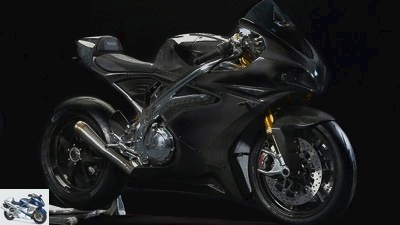
Alan Cathcart
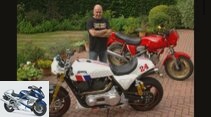
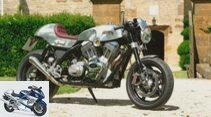
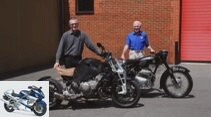
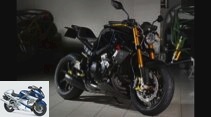
7th pictures
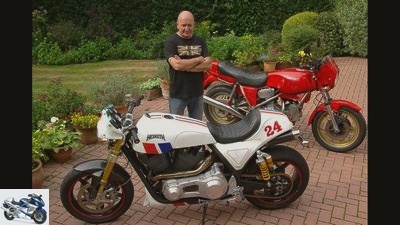
Alan Cathcart
1/7
Paul Sleeman between the old V 1000 (back) and his 24, named after James Hunt’s starting number. The current Sonnet with an enlarged S&S-engine and classic outfit

Alan Cathcart
2/7
Hesketh V 1000
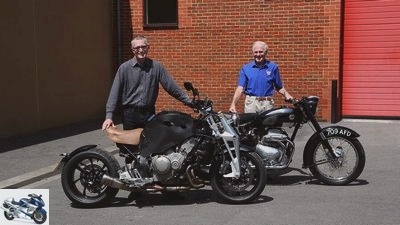
Alan Cathcart
3/7
Ariel boss Simon Saunders behind a current Ace prototype with a trapeze fork and Ariel racing legend and TT winner Sammy Miller with an Ariel Square Four. Below the new Ace R with a frame milled from solid and with a carefully tuned Honda VFR 1200 engine and 201 hp

Alan Cathcart
4/7
Ariel
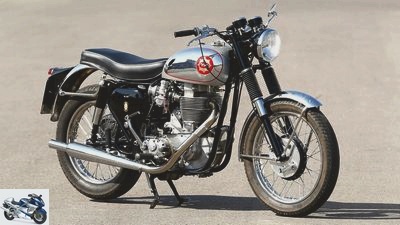
factstudio.de
5/7
BSA Gold Star
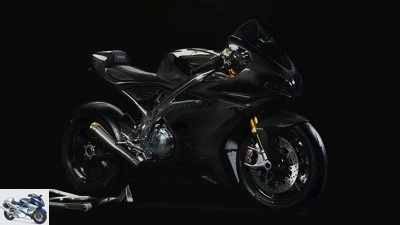
Alan Cathcart
6/7
Norton V4
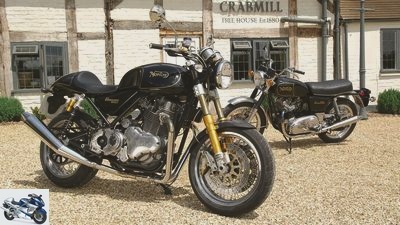
Alan Cathcart
7/7
Today and yesterday: above the Norton V4-SS in a pure carbon look, below the old (rear) and the new Commando
counselor
traffic & business
Classic English brands make a comeback
Classic English motorcycle brands make a comeback
Norton, Hesketh & Co.
Is Brexit to blame? Probably not, but the rebirth of the old brands somehow also reflects the spirit of the times on the island. The big names of the past are back.
Alan Cathcart, Stefan Kaschel
01/19/2017
The British love their Union Jack, that’s for sure. Since June 23, 2016 it has also been clear: the majority of them can do without the stars of the European flag. She prefers to do her own thing. A little more than half of them think they drive better this way. In light of this, it is truly no wonder that the confident islanders are looking at the glorious Commonwealth of the past rather than the common European future. In this context, it is only logical that the British are now remembering their glorious motorcycle history, which at the time, like almost everywhere in the world, was overwhelmed by the Japanese high-tech offensive. Of Ariel until Norton – there is rumbling and thundering again in the kingdom, the range of activities ranges from small series to intended mass production. But what’s up?
Buy complete article
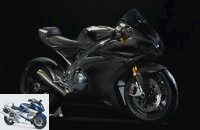
Classic English motorcycle brands make a comeback
Norton, Hesketh & Co.
8 pages) as PDF
€ 2.00
Buy now
Norton
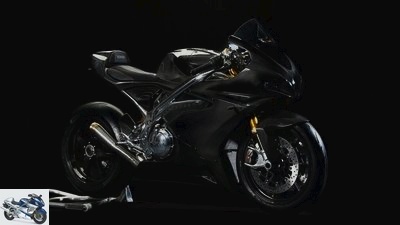
Alan Cathcart
Norton V4
Anyone who says “Norton” today has to say “Stuart Garner” in the same breath, because without the self-made millionaire and racing freak, the legendary brand would probably be history long ago. The 46-year-old from Barrow on Trent, who dropped out of school at 16 when he discovered “Beer, Girls and Yamaha’s LC 250”, later became a gamekeeper and then made his first million with a fireworks factory, bought more at the end of 2008 an eventful history of all rights and developments of the brand from the American investment banker Ollie Curme. He urgently needed fresh money after the Lehman crash. It then took Garner around two years before the first comeback commando rolls onto the streets of the kingdom. A second Commando offshoot was added in 2014, the Dominator, before Norton at the NEC British motorcycle trade fair in autumn 2016 – where else? – presented the next bang: the first “all British hypersports model ever”, the Norton V4.
It will hit the market in 2017, and if it does what the specs promise, it’ll be a bit of a sensation. Mainly because Norton does not rely on an Aprilia RSV4 engine, as it did in this year’s TT participation (seventh place under Australian David Johnson in the Superbikes), but on a completely newly developed V4 with a 72 degree cylinder angle and 1200 cubic centimeters displacement . It should press exactly 200 hp at 12,500 rpm and is located in an aluminum bridge frame with a round tube look based on the Triumph model. The finest Ohlins and Brembo goods are used as chassis components. When it comes to electronics, too, the British are making full use of the latest six-axis IMU from Bosch to control their assistance systems. They should keep the power pack of 200 hp and 179 kilograms dry weight under control, with which Norton is not only a superbike with the claim “the best of British”, but also the experience from the past five years of Isle of Man TT racing the road brings.
All of this is only available as an RR version (28,000 pounds), because the 200 Norton V4-SS (44,000 pounds) has a handmade, hand-polished frame and a rocker arm milled from solid (see above) already sold out. No wonder, the V4, which is largely made of aluminum and carbon (even the tank is made of the light material) has become a real beauty with fascinating proportions, which designer Simon Skinner compares from a design point of view “with brands like Aston Martin, Jaguar and McLaren”. And they are world leaders, according to Skinner.
The British view of things – and the V4 will probably also have predominantly British customers, well-heeled, of course, who also consider buying a motorcycle to be a question of national honor. After all, 28,000 British pounds is just under 33,000 euros – for a motorcycle that, despite all its exclusivity (or perhaps because of it), can probably do nothing better than the current superbikes off the shelf. But that’s not really what the Norton rebirth is about.
Hesketh
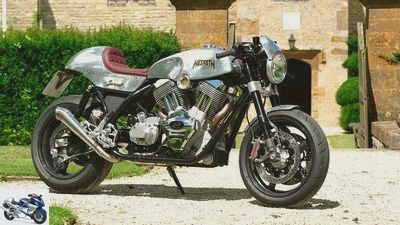
Alan Cathcart
Hesketh V 1000
Seen in this way, Stuart Garner and Paul Sleeman could easily team up, because the 52-year-old design engineer and inventor of a device that prevents diesel vehicles from being refueled with petrol is wildly determined to make the world happy with an old British brand. It was 2010 when Norton Commando driver and motorcycle enthusiast Sleeman presented the money from his London company Tullman Design to Lord Alexander Hesketh to negotiate the rights to the Lord’s brand. An agreement was quickly reached, and since then Sleeman has been working hard on the revival of the resounding name, which first became famous through a dazzling Formula 1 appearance with the equally dazzling James Hunt and later with the Hesketh V 1000. Their 86 PS strong V2 already came in 1980 with aluminum cylinder heads and four valves per cylinder.
It took four years before Sleeman presented the “24”, a streetfighter limited to this number, but this time not with a specially developed engine, but with the mighty American 52-degree S&S-Twin with over 1900 cubic centimeters. Sleeman asked for £ 35,000 for the 24 – and got it, not just from the British, but from customers all over the world. “Of course the majority came from the United Kingdom, but we also delivered to Germany, Spain, Australia and Russia. Everyone was happy. This is the most important thing when you take a large sum of money from someone with the mere promise that you will bid more than anyone else. But we kept our word. And now we have to show everyone that Hesketh is not a one-off number. ”This is what the new Sonnet (driving report in MOTORRAD 26/2016), which even more than its predecessor 24 stands for Sleeman’s idea of an AC Cobra on two wheels, stands for a combination of a large American big block and British elegance and handiness.
100 pieces of the purist roadster with the S&S-Twin (2163 cubic centimeters and 145 PS) would like to bring Sleeman to the man, because men (or strong women) should be in order to tame the 210 Newton meters of torque at 3000 / min. If he sells it for around 29,000 euros, the Briton has calculated that the next project can follow. A motorcycle “beyond anything that has existed before”, with a V4 built by Motus in Birmingham / Alabama with 1650 cubic centimeters, which also powers the MST sports tourer and the sensational Bienville Legacy V4 there. The contracts are signed and Sleeman is a firm believer in his success. “Even the first Hesketh from 1981 was a technological statement. Back when Ducati only built air-cooled two-valve engines and Guzzi and Harley only controlled their valves via bumpers. Okay, that was 30 years ago, but we want our customers to be proud of their Hesketh. There shouldn’t be anything like this anywhere else. “
Ariel
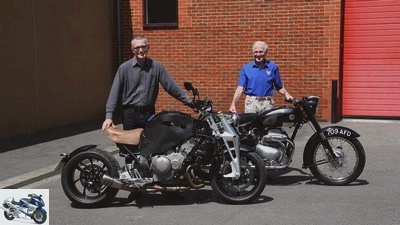
Alan Cathcart
Ariel boss Simon Saunders behind a current Ace prototype with a trapeze fork and Ariel racing legend and TT winner Sammy Miller with an Ariel Square Four. Below the new Ace R with a frame milled from solid and with a carefully tuned Honda VFR 1200 engine and 201 hp
A statement that Ariel boss Simon Saunders would undoubtedly sign immediately. In 2001 he left the old stamp with the
big names are resurrected, initially with a car, a street-legal racing two-seater called Atom.
Then in 2014 came the Ace, which can claim to have been the first British-style V4 well before the Norton. At least when it comes to eccentricity. “Motorcyclists love their machines,” says Saunders, “but they want their very own motorcycle, not just any one!” You get that at the small manufacturer from Crewkerne in Somerset, no question about it. Here, everything is manufactured on request that the light metal tubular space frame milled from the solid can accommodate, right up to the trapezoidal fork made in-house or a noble Ohlins component, from the rim design to the seat cover. Only the engine remains the same: the Honda V4 of the VFR 1200 with 1237 cubic centimeters and with DTC on request. In the R variant, also recently presented in Birmingham, however, with significantly more pressure. The well-known English tuner Mark Woodage pumped the V4 to 201 PS with a lot of precision work, while a lot of carbon (rims, bodywork, tank) significantly reduces the weight. And of course drives the price up. If roundabout 25,000 euros are set for the cheapest Ace variant, an “R” is set at 49,995 euros. Without taxes, of course.
Can it work? “Yes”, says managing director Tom Siebert, because “after 17 years in which we have slowly made Ariel what it is today, we know how small series work. And what makes the customers who buy them tick. ”Siebert is likely to mean a completely different clientele than those of the British returners BSA has in his sights.
BSA
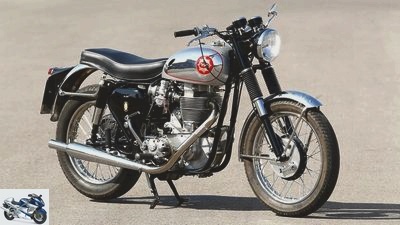
factstudio.de
BSA Gold Star
BSA – what a name in British motorcycle history. And Mahindra – what an industrial giant behind it. It quickly becomes clear: this is not about exclusive small series for well-heeled customers, this is about the big deal. The Mahindra Group is one of the top 20 corporations on the subcontinent and has been in the motorcycle business since 2008. Since then, the Indians have invested around 200 million dollars in their two-wheeler division MTW (Mahindra Two Wheelers), built a factory with a production capacity of 500,000 units, but with around 150,000 units they are still the smallest of the five large Indian manufacturers (behind Hero, TVS, Bajaj and Royal Enfield). Worse still, in the world’s second largest two-wheeler market (over 15.4 million units in 2015) they lost around $ 148 million over the years. It was time to rethink.
In October last year, Classic Legends Pvt. LTD, a subsidiary of Mahindra Group, for 3.4 million
British pounds per 120,000 shares from Regal Engineering, the holder of the BSA naming rights. Following this deal, Mahindra made its plans public to revive the brand in the European and North American markets within the next two years. With motorcycles developed and designed in England, which should, if possible, also be produced in the UK. “We believe that we will be able to resurrect the aura and commercial success of a brand with this reputation,” said Rajesh Jejurikar (51), President and CEO of MTW. “We want to position the brand in a contemporary way without losing the historical touch of BSA.” As a vehicle for this, the Indians envision a single between 500 and 750 cubic centimeters, because there is “a gap in the market for a classic single cylinder”. A development team will be formed immediately that will get started on site as soon as possible. This is also necessary, because Jejurikar wants to be on the market with the first BSA as early as 2019. And that would indeed be something like a rebirth of the Commonwealth – with roles reversed.
Related articles
-
Nakamura 23 pictures Indian 1/23 Indian 2/23 Indian 3/23 Indian 4/23 Indian 5/23 Indian 6/23 Indian 7/23 Indian 8/23 Indian 9/23 Indian 10/23 Indian…
-
Comeback of old motorcycle brands
bilski-fotografie.de 32 pictures Siemer 1/32 A smooth 100 years lie between this Indian and … fact 2/32 … and this Indian Scout. 3/32 The snowmobile…
-
Motorcycle brands and their reputation
mps photo studio counselor traffic & business Motorcycle brands and their reputation The brands and their reputation Image check from MOTORRAD 48,118…
-
Norton back in racing: Comeback at TT 2022
Cathcart Sports & scene Motorsport Norton back in racing: Comeback at TT 2022 Norton wants to go back to racing Comeback at the TT 2022 The British…
-
Review of the Sachsenring Classic 2016
jkuenstle.de 49 pictures ADAC 1/49 Picture gallery: Sachsenring Classic 2016. jkuenstle.de 2/49 In addition to the World GP Bike Legends, there were…
-
Report: This is how Austria’s police make money
archive to travel Report: This is how Austria’s police make money Report: rip off or just punishment? This is how Austria’s police make money Right line…
-
Royal Enfield Classic 500 EFI put to the test
www.bilski-fotografie.de 16 pictures www.bilski-fotografie.de 1/16 Royal Enfield Classic 500 EFI put to the test. www.bilski-fotografie.de 2/16 If it…
-
clothing Classic motorcycle equipment Classic motorcycle equipment Legend without end? Fackelmann station wagon, Elefantenboy, Pichler disguise: What…
-
The best stories from 25 years of MOTORRAD Classic
archive Sports & scene The best stories from 25 years of MOTORRAD Classic 25 years of MOTORRAD Classic A quarter of a century MOTORRAD Classic Content of…
-
Motorcycle parts-Bielefeld classic spare parts
Siemer counselor traffic & business Motorcycle parts-Bielefeld classic spare parts Motorcycle parts Bielefeld The slaughterhouse for motorcycle…